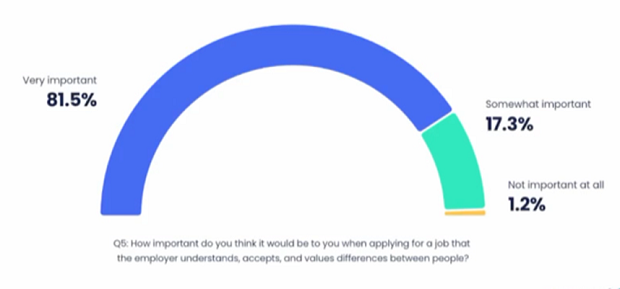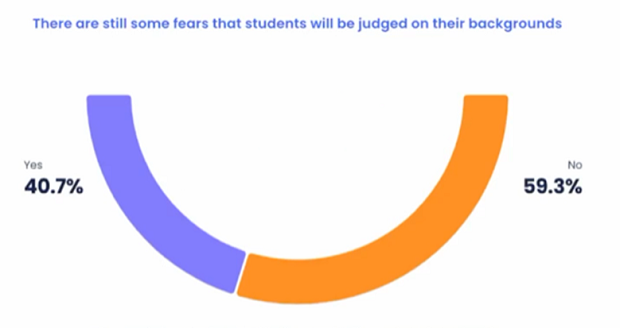Adelin Mihalcea, a Year 13 student from Middlesex, explains which diversity metrics really count among job-hunting students.
Diversity and inclusion metrics are growing factors that students like me and other candidates look at when choosing an employer.
Coming from various social backgrounds and ethnicities, we live in an increasingly diverse society and I believe that our workplace is most comfortable when it is representative.
Diversity includes race, gender and ethnicity, but it also includes age, religion, disability and sexual orientation – when looking at our workplaces, we need to consider it all.
No one wants to work in an environment where they feel unwelcomed or signalled-out based on their background, gender or ethnicity.
Feeling included and being a part of a diverse workforce is high on my list of employer must-haves. So, when deciding whether a firm is right for me I research their diversity reports as it helps put into perspective how welcoming and inclusive they are.
Fortunately, most firms are increasing their diversity levels. However, increased diversity doesn’t necessarily equate to ‘inclusivity’.
Employers mustn’t just hire more diverse individuals to meet quotas – this one-note approach ignores skills and expertise. Individuals have no control over how diverse they are, however they can control their work ethic, grades and what they achieve, and this is what employers should be looking at.
Having said that, employers should also keep in mind that some candidates may not have the same level of access to opportunities and should consider this when making a decision. A great example of this is how universities give out contextual offers to individuals from an under-represented background.

Springpod 2021 Diversity & Inclusion Survey on 3,100 Students
Another factor that unfortunately still exists is employer bias/discrimination. This is a known issue that many students fear when applying for a job, especially in an industry dominated by a particular gender or ethnicity.
Employers should understand these fears and aim to mitigate bias as much as possible such as through blind interviews or text-based questions rather than covering letters.

Springpod 2021 Diversity & Inclusion Survey on 3,100 Students
Having a diverse workforce is not enough to justify that a firm is genuinely diverse. Showcasing D&I metrics when all these individuals are at the same level means a lack of diversity. Having diverse individuals represented throughout the entire corporate structure ranging from top positions to entry-level positions is how real diversity and inclusion come about.
Showing diverse individuals in top positions gives a blueprint of success to others. It’s motivating to see diverse people at the top because it shows that if you work hard and continue to pursue your goals, you’ll be recognised and rewarded.
Diversity and inclusion are important factors that employers need to consider within their recruitment process to give everyone fair and equal access to opportunities.
Adelin recently took part in the ISE’s first D&I Conference on behalf of the careers platform, Springpod. You can read more about what their students had to say, in the Diversity & Inclusion Report for Employers
If you missed ISE’s Diversity and Inclusion Conference 2021 you can catch it here


0 Comments